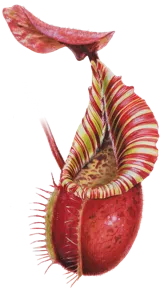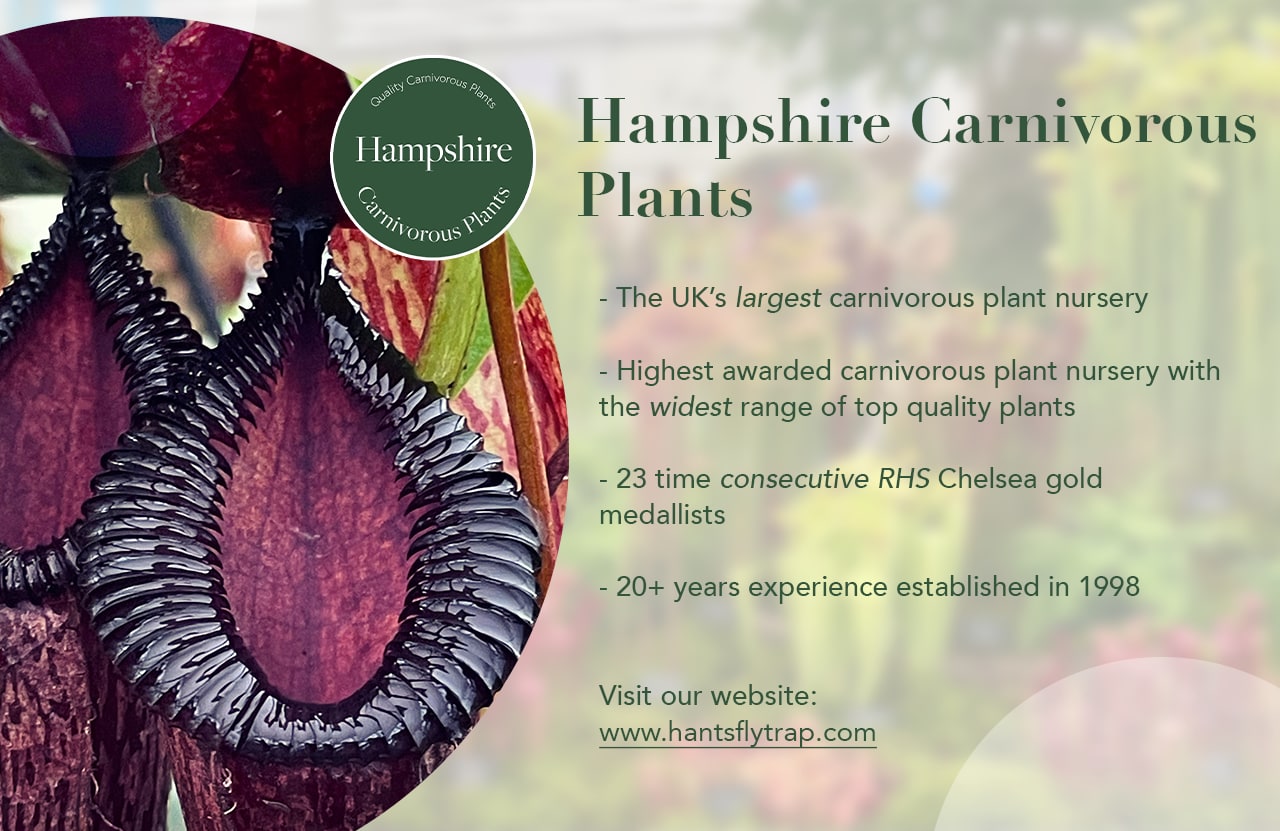Nepenthes hamata
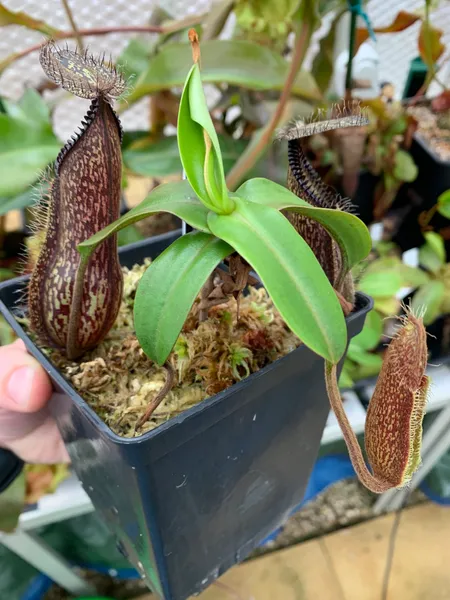 A nice bushy cutting of Nepenthes hamata
A nice bushy cutting of Nepenthes hamata 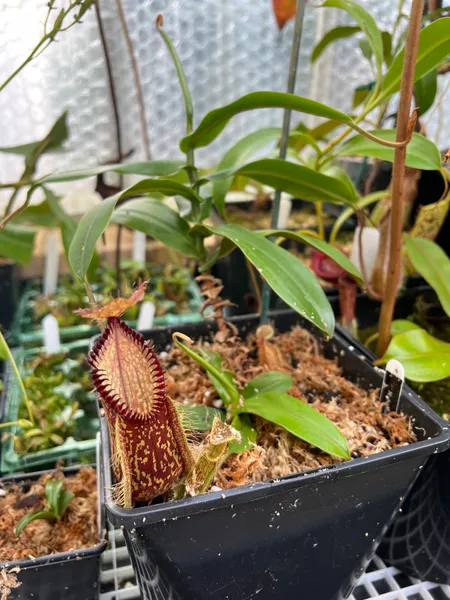 Freshly repotted - the main growth point is reaching the point where I'd typically cut it, to encourage basals like the one you see at the base
Freshly repotted - the main growth point is reaching the point where I'd typically cut it, to encourage basals like the one you see at the base 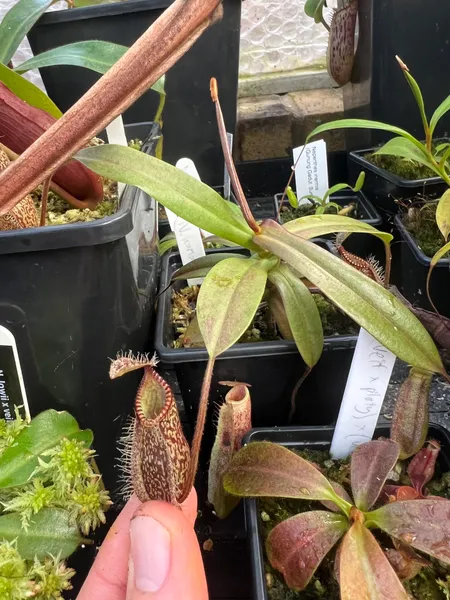 Little N. hamata Tambusisi, from seed. Nice purple-tinted leaves and dark red pitchers
Little N. hamata Tambusisi, from seed. Nice purple-tinted leaves and dark red pitchers 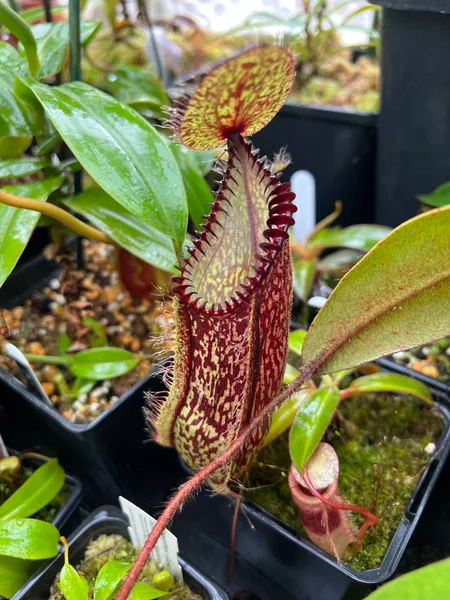 N. hamata has fairly large pitchers compared to the size of the leaves
N. hamata has fairly large pitchers compared to the size of the leaves .Bxh5Wgc__Z1rKQB2.webp) Pitcher on my male N. hamata from Lumut (BE-3380)
Pitcher on my male N. hamata from Lumut (BE-3380) 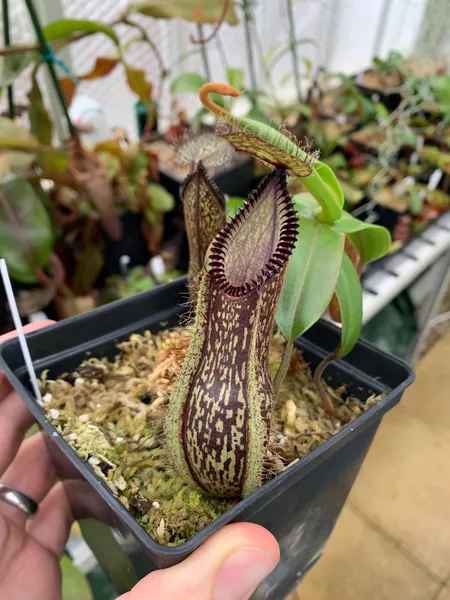 Pitchers darken as they get older - the teeth can look almost black
Pitchers darken as they get older - the teeth can look almost black 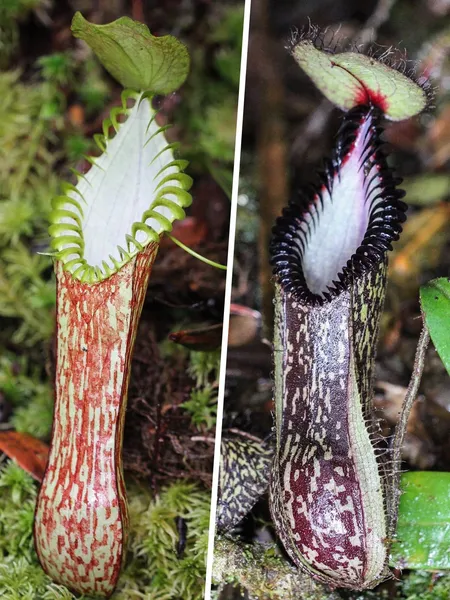 Upper & lower pitchers in-situ, photographed by Laurent Taerwe
Upper & lower pitchers in-situ, photographed by Laurent Taerwe Description & Care
N. hamata is one of the truly iconic highland Nepenthes species, and many people’s favourite. It’s endemic to the island of Sulawesi, east of Borneo, and is famous for its highly developed peristome. The lower pitchers are dark and highly speckled, with a mouth surrounded by wickedly hooked teeth. The lids are covered with distinctively coarse upward-pointing hairs. The upper pitchers are larger and often lime green, with teeth that can be even longer than their terrestrial counterparts.
While known to science since at least 1938, the species wasn’t formally recognised until 1984 when two descriptions were published in quick succession: Shigeo Kurata named it N. dentata, while Turnbull & Middleton named it N. hamatus. The latter comes from the Latin word for ‘hooked’, and eventually this name won out.
I grow two forms of Nepenthes hamata: the popular single clone release from Borneo Exotics (BE-3380, a male from Lumut), and a small Tambusisi plant raised from horticulturally-produced seed. I keep them in normal highland conditions. The species has an undeserved reputation for being difficult which I think stems from two things. First, N. hamata is slow and very fussy when small (though often becomes a weed once it reaches about 10cm across). Second, it’s extremely pest-prone - if you have a problem with mites or thrips in your grow space, N. hamata will almost always be patient zero. I have no idea why this is.
Once you have a large plant, I’d recommend pruning back vines regularly. This encourages basal production, and makes for an attractive, bushy plant. N. hamata pitchers are typically quite large relative to the size of the leaves, so with proper care you’ll have a dense thicket of toothy pitchers!
Last thing to mention: hybrids. Some people absolutely love N. hamata hybrids, and fair play to them! There are dozens to choose from. Personally, though, I’m not a huge fan of the diluted dentition and soft papery pitchers found in many of its hybrids. I prefer N. hamata crosses with other toothy species. I grow N. hamata × edwardsiana, N. villosa × hamata, and N. diabolica × hamata (aka. N. Smilodon, created by Simon Lumb). All three are spectacularly toothy! I also grow N. robcantleyi × hamata (aka. “Robmata”) which breaks my rule but is a pretty cool cross.
How I Grow It
| Media | Long fibre sphagnum moss, perlite, and - optionally - orchid bark (2:1:1). |
| Water | Damp but not wet. |
| Light | Very bright, diffused light. |
| Fertiliser | Maxsea or liquid orchid feed in the pitchers, every two weeks. |
| Temperatures | 12°C (54°F) minimum year-round, with summer highs of ~ 30°C (86°F). |
| Humidity | 70% during the day, rising to over 90% at night. |
Learn more about cultivation with my guide to growing Nepenthes.
Day & Night Temperatures
Nepenthes hamata is a highland species, found at elevations of between 1400 and 2500 meters. This range is highlighted in orange above, and equates to temperatures of approximately 20 - 28°C during the day, and 10 - 18°C at night.
See Also
I've written profiles of the following hybrids involving Nepenthes hamata:
Habitat
| Native to | Sulawesi |
| IUCN Red List status | Least Concern |
| Natural hybrids | N. glabrata, N. tentaculata |
Buying N. hamata
| Availability | N. hamata is in tissue culture, so it can be found for sale. But the species is rarely available in larger sizes. |
| Borneo Exotics codes |
|
| Recommended nursery | California Carnivores Hampshire Carnivorous Plants |
